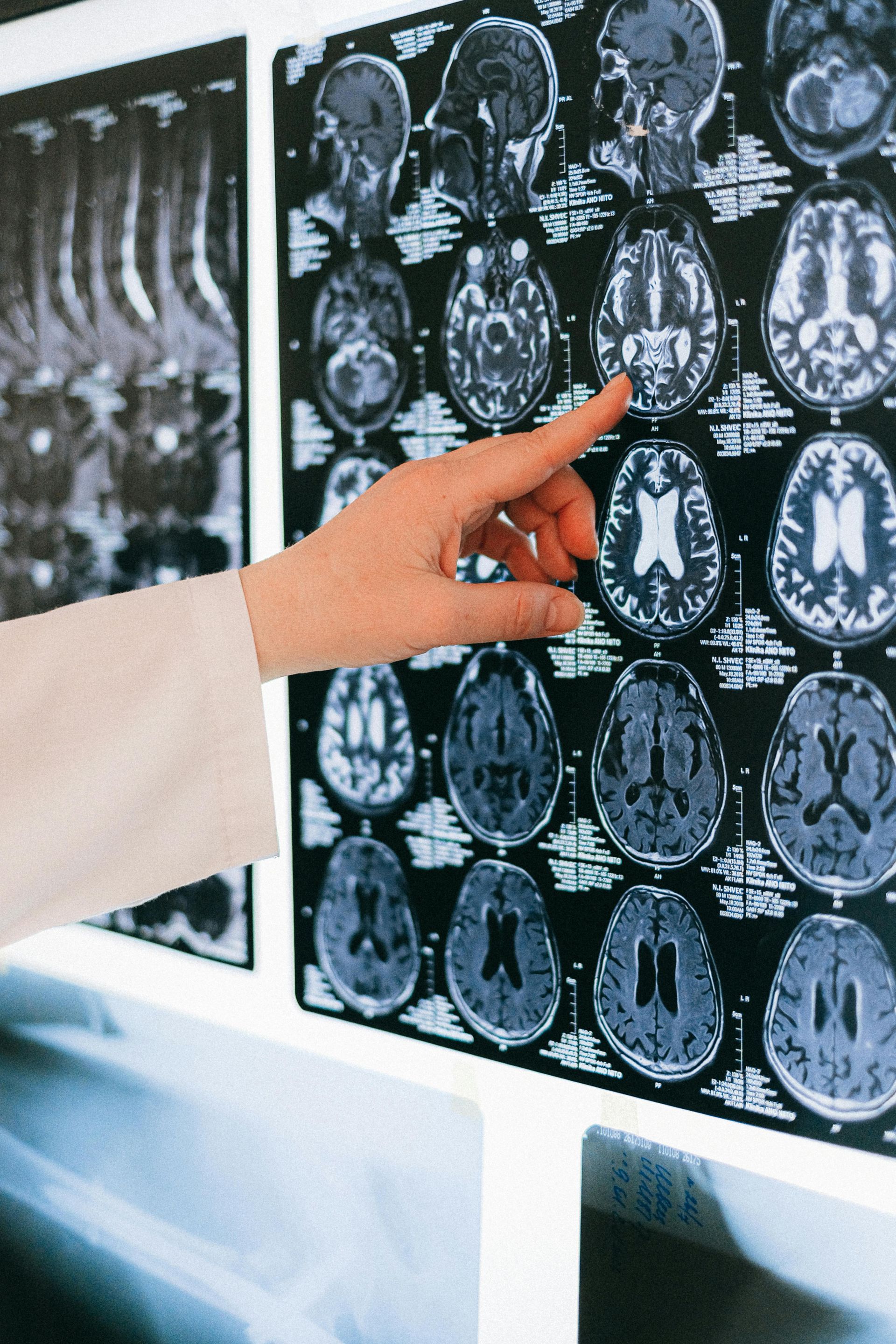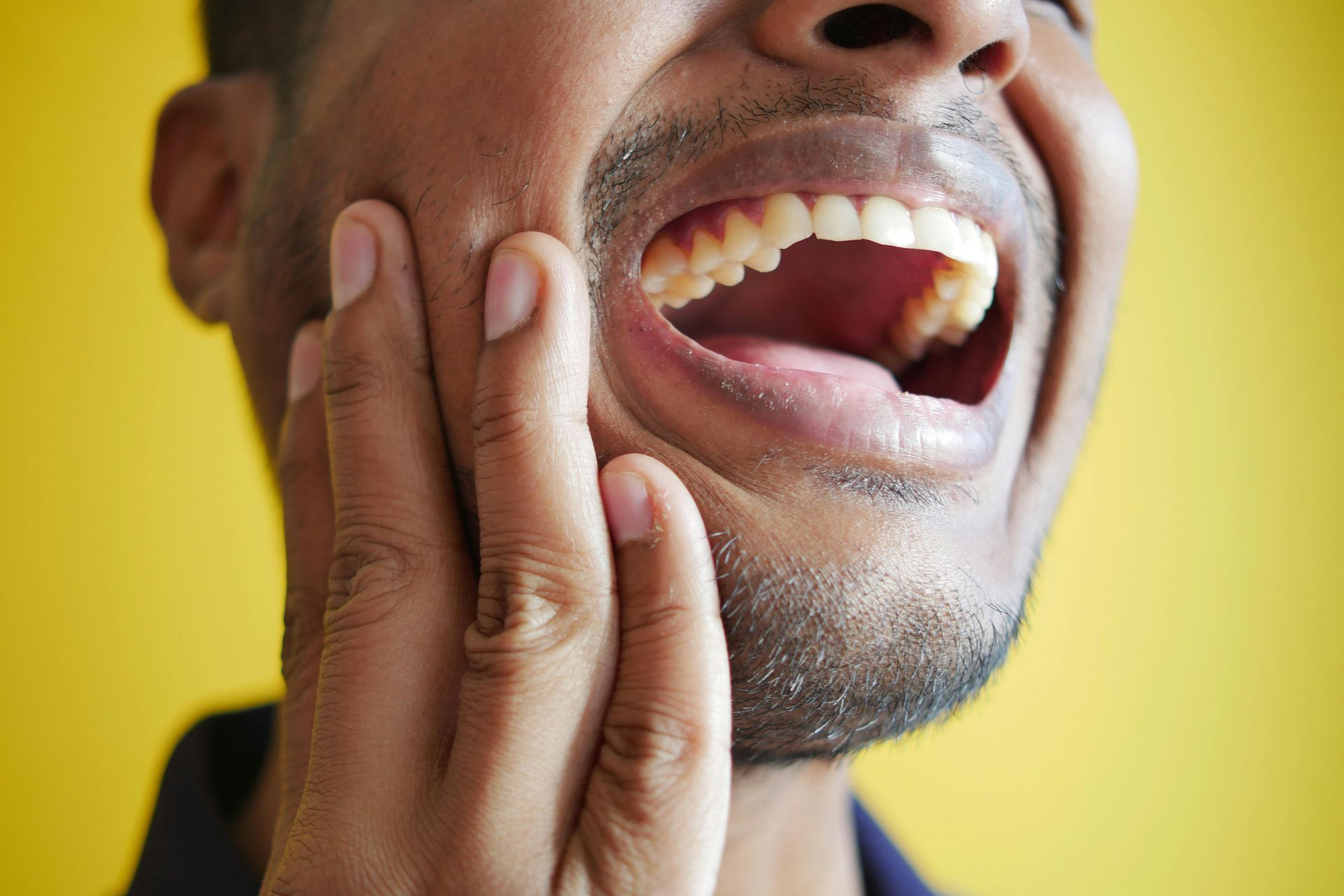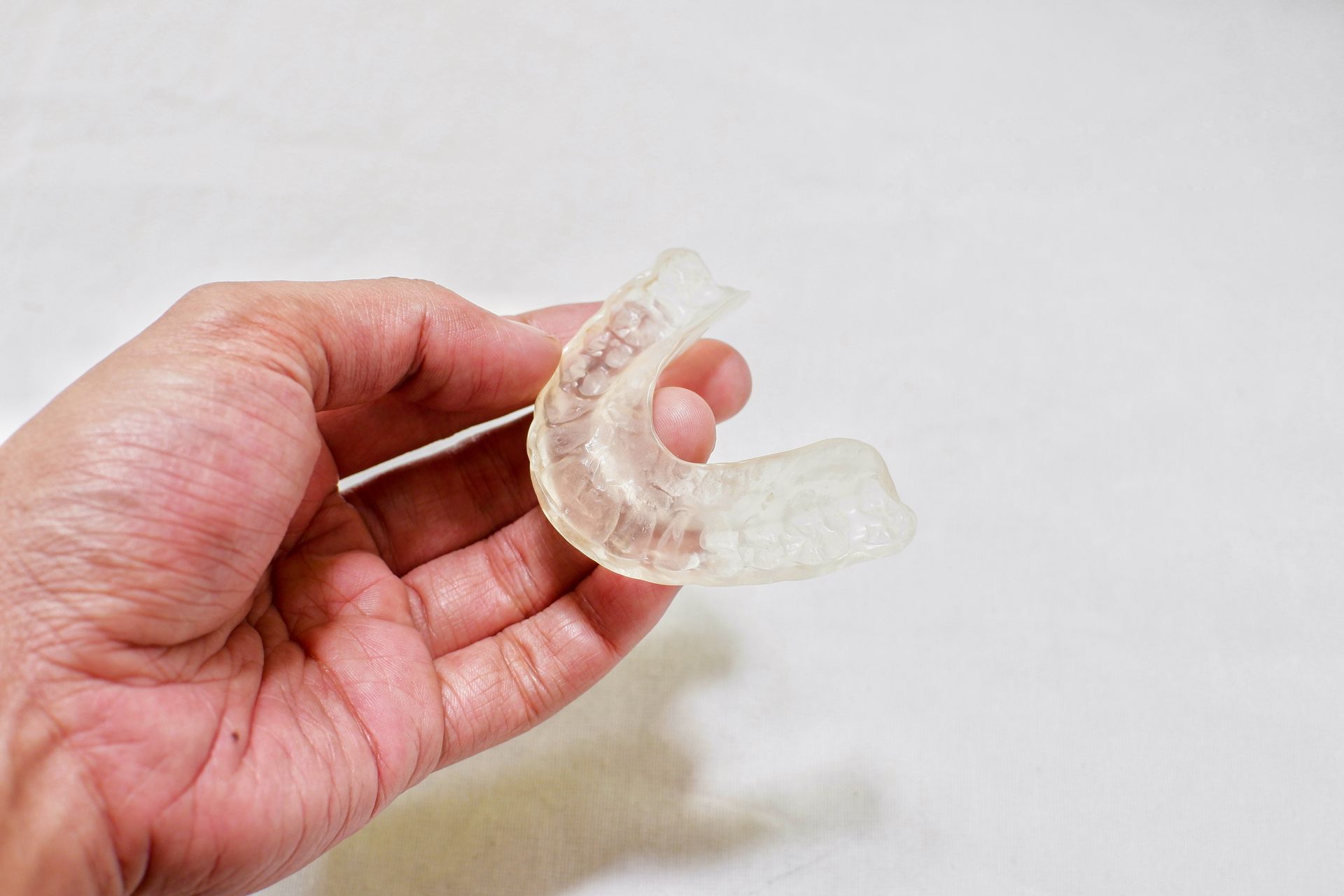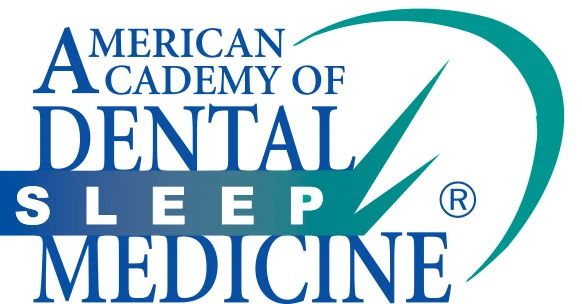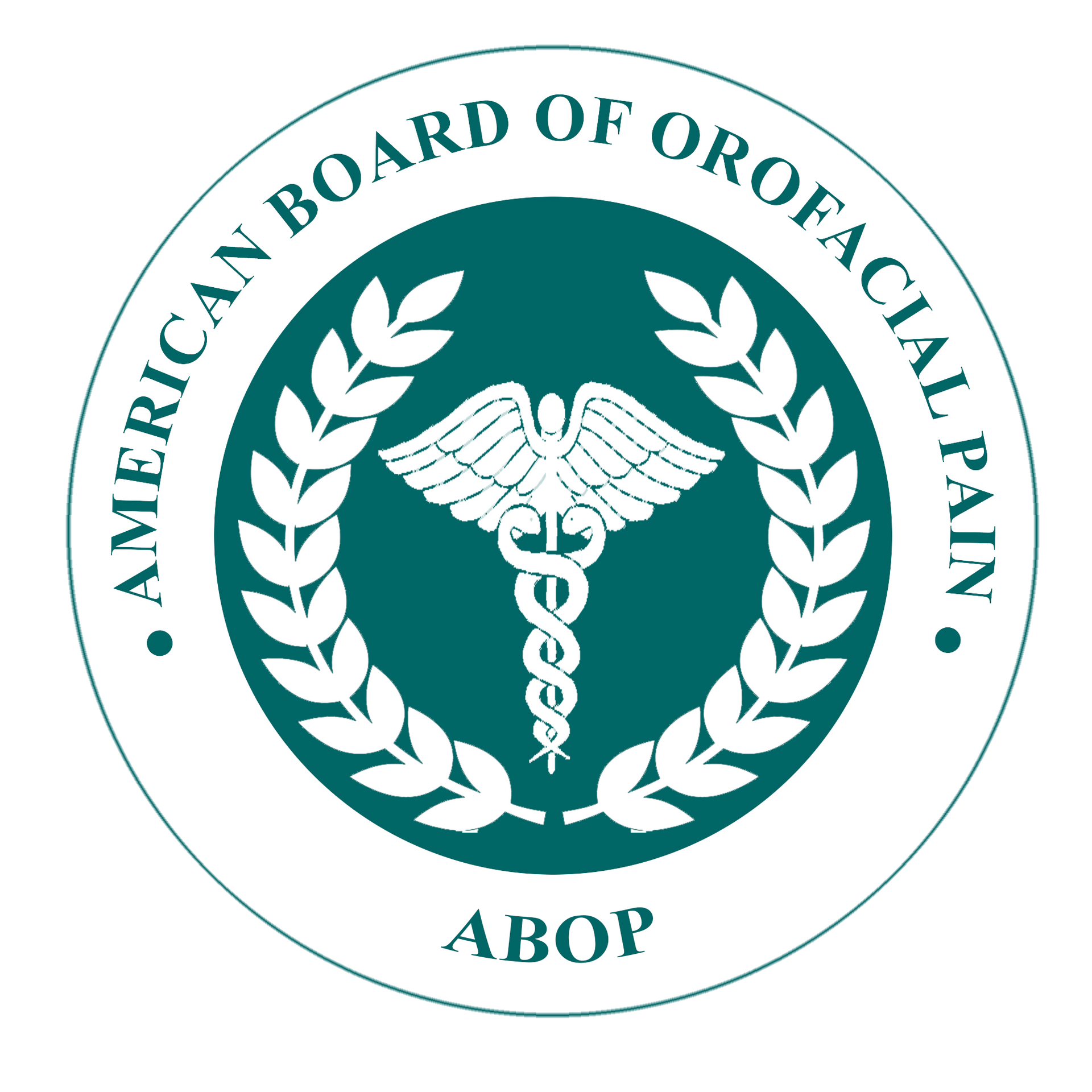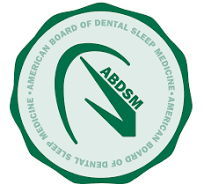How Shoulder & Neck Pain Relates To Your TMJ
*Updated on 09/25/25
The temporomandibular joint (TMJ) is a small but highly complex joint that connects the lower jaw to the skull and works in harmony with the muscles, ligaments, nerves, and bones of the head, neck, and shoulders. Because these structures share muscular and neurological pathways, problems with the TMJ can lead to pain that radiates far beyond the jaw, often affecting the neck, shoulders, and upper back through referred pain, and creating a feedback loop where pain in one area worsens discomfort in another. This interconnectedness also means neck and shoulder issues can trigger or aggravate TMJ disorders, and the resulting symptoms, including headaches, can make diagnosis challenging. An experienced TMJ specialist can identify the true source of pain and create a tailored, comprehensive treatment plan that treats both the TMJ disorder and the discomfort.
At Restore TMJ & Sleep Therapy in The Woodland,
Dr. Katherine S. Phillips and
Dr. YC Joseph FischerHahm are recognized leaders in diagnosing and treating complex temporomandibular disorders (TMD) and their related symptoms, including neck and shoulder pain. Dr. Phillips, a board-certified orofacial pain specialist, and Dr. FischerHahm, a maxillofacial pain and dental sleep medicine expert, bring decades of combined experience and advanced training to every case. Their expertise in the intricate relationship among the jaw, cervical spine, and surrounding musculature allows them to pinpoint the true source of discomfort and deliver targeted, effective treatment that restores function, relieves pain, and improves quality of life.
How Your TMJ is Connected to Your Neck, Shoulders, and Back
Your temporomandibular joint (TMJ) is an intricate connection where the lower jawbone (mandible) meets the temporal bone of the skull, just in front of each ear. One of the most complex and hardest working joints in the body, the TMJ acts like a sliding hinge that allows the jaw to move up and down, side to side, and forward and backward to facilitate essential movements like chewing, speaking, yawning, and more.
While small in size, the TMJ is a crucial joint that is part of a complex maxillofacial system comprised of:
- Muscles of mastication. These include the masseter, temporalis, and pterygoid muscles, which move the jaw during chewing and speaking.
- Cervical muscles. Powerful neck muscles like the sternocleidomastoid (SCM) and trapezius anchor the head, neck, and shoulders, working in harmony with jaw movement.
- Spinal support. The upper cervical spine (especially C1–C3) influences jaw posture, while lower segments (C6–C7) can impact shoulder and upper back alignment.
- Nerve pathways. The trigeminal nerve, the largest cranial nerve, supplies sensation to the face and jaw. It interacts with cervical nerves that serve the neck and shoulders, creating a highway for referred pain.
- Postural links. Proper jaw alignment depends on head and neck posture. Forward head posture or rounded shoulders can subtly alter how the TMJ moves.
TMJ Disorders and Pain in Your Neck or Shoulders
When the temporomandibular joint (TMJ) is functioning properly, it works in harmony with the muscles, ligaments, nerves, and bones of the head, neck, and shoulders to allow smooth, pain-free movement. As one of the most complex joints in the body, the TMJ relies on precise coordination between these structures to facilitate everyday actions like chewing, speaking, and swallowing, but because the jaw shares both muscular and neurological pathways with the neck and shoulders, even a small disruption in its alignment or movement can have a far-reaching impact. This intricate network means that strain, tension, or inflammation in the TMJ can radiate outward, creating discomfort well beyond the jaw itself.
Temporomandibular disorders (TMDs) occur when the TMJ is injured, misaligned, overworked, or otherwise impaired. These conditions can cause localized jaw pain and stiffness, but their effects often extend into the neck, shoulders, and upper back through a phenomenon known as referred pain. Misalignment or abnormal movement in the TMJ can trigger muscle imbalances, nerve irritation, and postural changes, forcing other areas of the body to compensate. Over time, this can lead to persistent headaches, neck stiffness, shoulder tension, and even back pain, turning what begins as a jaw problem into a much broader source of discomfort.
Neck and shoulder pain are among the most common symptoms associated with temporomandibular disorders (TMD). Studies show that up to 70% of patients diagnosed with TMD report neck pain as a symptom, and research published in the Journal of Oral Rehabilitation found that 59% experienced pain in neck musculature, with severity increasing alongside TMD severity.
How Neck and Shoulder Pain Can Lead to TMJ Disorders
The relationship between the TMJ and other muscles also works both ways. Chronic neck tension, poor posture, or shoulder injuries can restrict natural head and jaw movement, and tight SCM or trapezius muscles can subtly change how the TMJ opens and closes, straining the joint and triggering TMD symptoms.
This is especially common in people who:
- Work long hours at computers or on phones (forward head posture)
- Carry heavy bags on one shoulder
- Have a history of whiplash or cervical spine injury
- Clench their jaw when stressed
Over time, this creates a feedback loop: TMJ pain worsens neck and shoulder tension, which in turn makes TMJ pain more likely.
What TMJ-Related Neck and Shoulder Pain Feels Like
TMJ-related pain rarely stays in one place and can be felt far from its point of origin. This tendency to radiate into other areas makes it easy to mistake for unrelated issues, so it can be a challenge pinpointing its true source.
Common pain patterns related to TMD present at the:
- Base of the skull, as an aching or pressure just under the occipital bone, often near the ears.
- Sides of the neck, as tenderness along the SCM muscle, sometimes extending toward the collarbone.
- Back of the neck, as stiffness and pain in the posterior cervical muscles.
- Top of the shoulders, as tension or burning discomfort across the trapezius muscles.
- Upper back, as muscle fatigue or tightness between the shoulder blades.
Some patients also experience tingling, numbness, or a “heavy” feeling in the shoulders and arms, further complicating diagnosis.
Why TMJ-Related Neck and Shoulder Pain is Difficult to Diagnose
TMJ disorders are sometimes called the “great imitator” of musculoskeletal pain because their symptoms overlap with so many other conditions. A patient with neck stiffness might be referred to orthopedics; someone with headaches might see a neurologist. If TMJ dysfunction isn’t on the radar, the root cause remains hidden.
Here are 4 reasons why TMJ-related neck and shoulder pain is so difficult to diagnose.
- Symptoms overlap with cervical spine disorders, nerve impingements, and tension headaches.
- Delayed onset, with neck and shoulder pain appearing weeks or months after jaw symptoms start.
- Individual variability, where some patients have severe jaw pain with mild neck symptoms and others have the reverse.
- Complex anatomy, because the maxillofacial system’s integration with the spine makes cause-and-effect hard to untangle.
Another reason TMJ-related neck and shoulder pain is so often misdiagnosed is the presence of headaches. The same muscular and nerve connections that send pain to your neck can also refer pain upward into the temples, forehead, or even behind the eyes.
- Tension-type headaches, caused by sustained muscle contraction in the jaw, neck, and scalp.
- Cervicogenic headaches, which originate in the cervical spine but radiate forward to the face and head.
- Migraines, in which TMJ strain acts as a trigger.
Patients with recurring headaches often focus on neurological or sinus causes, while the TMJ remains an unexamined source of the problem. This is why a comprehensive evaluation—one that considers dental, musculoskeletal, and neurological factors—is essential.
How a TMJ Specialist Can Help Identify the Root Cause of Your Neck and Shoulder Pain
TMJ specialists like Dr. Phillips and Dr. FischerHahm of Restore TMJ & Sleep Therapy specialize in diagnosing and treating the complex, interconnected pain patterns of TMJ-related muscle pain.
Their expertise in both maxillofacial function and musculoskeletal alignment allow them to pinpoint the true source of discomfort through a detailed assessment that includes:
- A thorough medical and dental history
- Physical examination of jaw movement, bite alignment, and muscle tenderness
- Palpation of neck and shoulder muscles for trigger points
- Posture and spinal alignment evaluation
- Diagnostic imaging, if needed
Moreover, the connection between the TMJ and upper body isn’t just mechanical; it’s also neurological and behavioral. That’s why relief often requires a
comprehensive approach, because, if left untreated, TMJ-related pain can become chronic, leading to more severe headaches, worsening posture, and even spinal alignment issues.
Because the entire system is addressed together, treating the TMJ can also improve headaches, neck stiffness, and shoulder tension, and early intervention with a skilled specialist gives patients the best chance at reducing muscle tension and spasms, restoring healthy posture and movement pattern, minimizing headaches and referred pain, and improving overall quality of life.
Treating TMJ-Related Neck and Shoulder Pain
Once the cause-and-effect relationship between a TMJ disorder and your neck or shoulder pain is clear, treatment can be tailored to relieve both TMJ dysfunction and its referred pain.
A comprehensive treatment plan from a TMJ specialist might involve one or more therapies, such as:
- Oral Appliance Therapy, which uses custom splints or nightguards to reduce jaw strain and teeth grinding.
- Trigger point injections that provide targeted relief for muscle knots contributing to pain.
- Physical therapy for exercises to strengthen and balance jaw, neck, and shoulder muscles.
- Posture correction, such as ergonomic adjustments for workstations, and training to reduce forward head posture.
- Stress management, including relaxation techniques to curb jaw clenching during high-stress periods.
- Home care like heat or cold therapy, gentle stretching, and diet modifications to reduce jaw strain.
Treat Your TMJ-Related Neck and Shoulder Pain at Restore TMJ & Sleep Therapy in The Woodlands
At Restore TMJ & Sleep Therapy in The Woodlands, Dr. Katherine S. Phillips and Dr. YC Joseph FischerHahm provide comprehensive, targeted care designed to address the root cause of your TMJ-related neck and shoulder pain, not just the symptoms. They take a whole-body approach to diagnosing and treating your pain, combining advanced training, decades of experience, and deep expertise in both maxillofacial function and musculoskeletal alignment, . By identifying and treating the underlying source of your pain, Dr. Phillips and Dr. FischerHahm can help restore proper function of your TMJ, relieve discomfort, and improve your long-term quality of life.
If you are experiencing chronic pain in your jaw, neck, or shoulders, it might be time to consider
TMJ treatment.
Schedule an appointment today and get started on the road to relief.
Resource Links
https://www.verywellhealth.com/is-your-neck-pain-related-to-your-jaw-joint-4145794
https://www.ncbi.nlm.nih.gov/pmc/articles/PMC3706181/
https://www.colgate.com/en-us/oral-health/temporomandibular-disorder/tmj-massage-to-relieve-jaw-pain
https://www.ncbi.nlm.nih.gov/pmc/articles/PMC4062347/
https://www.healthline.com/health/tmj-exercises
-2700x842-1920w.png)







